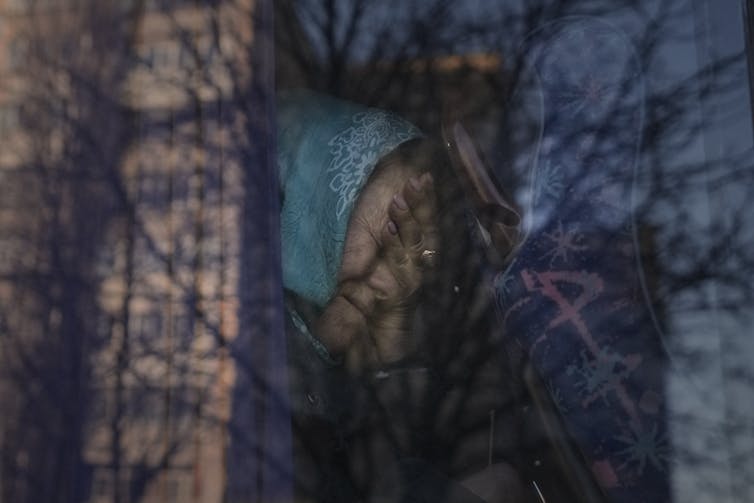
With the war in Ukraine in its second month, casualties are mounting. The full toll of civilian death is not yet clear, but the catastrophic impact of the sustained siege of cities like Mariupol by Russian forces is not difficult to imagine.
On the Russian side, losses have also been significant, estimated to be as high as 15,000 deaths.
War is devastating. It is distinctive for its loss of life on a massive scale. It is equally distinctive for the means and methods — the weapons — that cause such death.
Media coverage of the war has featured stories on the weapons being used by both Russian invaders and Ukrainian defenders.
The media has introduced the general public to Russia’s Kalibr, Iskander and Kinzhal missiles. There have also been stories about the delivery of lethal aid — deadly weapons and military equipment — by countries that include Canada to help Ukraine defend against Russian troops and protect its citizens.
In addition to Javelin anti-tank and Stinger anti-aircraft missiles and millions of rounds of ammunition, the United States recently announced it will send Switchblades, otherwise known as “killer drones.”
Why are some weapons acceptable?
Russian’s invasion of Ukraine is illegal. There’s mounting evidence it’s committed war crimes in Ukraine that must be prosecuted and punished. But in war killing is permitted. Deadly or lethal force is used on all sides.
But how do we distinguish between different kinds of weapons and their lethal effects? Why are some forms of death and destruction permitted while others are not? How, in war — when wounding and killing are objectives on all sides — can we even make such distinctions?
War is horrifying because of how many people die but equally troubling is that there are rules about how their killings should be accomplished.
Lethal weapons should be easy to define — weapons that cause mortal injury or wounds that are severely debilitating. But not all weapons are considered acceptable, even if they effectively have the same result.
Russia’s use of cluster munitions and its potential to use chemical weapons, both of which are prohibited by international law, constitute war crimes. Even war has rules.

Because the small bomblets dispersed by cluster munitions cover a wide area, they’ve been outlawed for violating protections enshrined in the Geneva Conventions that protect civilians and civilian spaces (schools, buildings, residences) from being intentionally attacked.
Chemical weapons — toxic substances intended to cause death or permanent harm — also contravene a principle preventing unnecessary suffering. Tactical nuclear weapons have wide-ranging devastating effects for civilians and militaries, though there’s nothing prohibiting them. But their use would cross a moral “red line.”
These rules prohibit certain weapons, but many others are permitted, seen as more legitimate, more legal and even more humane.
Weapons, especially lethal ones, present a paradox at the heart of the laws of war. Although attempting to minimize violence, laws of war don’t prevent war. Instead they allow war by outlining how it should and should not be done.
Legitimate lethality
Most weapons used in war are lethal. But their specific type of lethality has to meet standards of legitimacy according to the laws of war — something that those who design weapons must keep in mind.
There is a very specific process for designing weapons to be legitimately lethal.
Improving the range and accuracy of missiles or the explosive radius of bombs is a priority. Weapons design also involves experiments with materials that simulate human flesh, such as soap and gelatin blocks and live and dead animals. These experiments are used to simulate how bullets or explosives might penetrate human bodies, how they “disrupt” (tear, cut and pulverize) tissue — and how to optimize their abilities to do so.

Even in the language of technical expertise, devastating physical damage is described in weapons testing reports.
Information on how the body will be wounded is matched up with data from active battle to determine on which parts of the body wounds are more likely to occur, and on which parts of the body these wounds are likely to be most damaging (or deadly) by “disabling” enemy combatants.
In contexts other than war, these details would be regarded as abhorrent. But in war, being abhorrent is not always illegal.
Killing the ‘right way’
Ensuring the lethality of weapons does not occur in a legal or ethical vacuum. Laws of war aim to outlaw abhorrent acts: weapons that cause cruel wounds are illegal. But how can those wounds be distinguished from others, especially if they cause death?
The determination is made through a detailed study of a weapon’s mechanisms of wounding: a bullet that expands on impact is prohibited, for example, but a bullet that fragments is permitted.
Scientists, diplomats and military officials review weapons within the existing laws of war and determine which ones are inhumane. In effect, the line between criminal weapons and conventional ones is based on how they kill, not whether they do kill.
As we witness the death and destruction being caused by the war in Ukraine, it’s easy to assume that the rules must have been broken. Surely, any violence on this scale must be a crime?

But wartime violence often isn’t considered criminal, because war itself is not a crime. If the laws of war contend that the right to kill is limited, determining these limits is not just a question of how many are killed or even who is killed — it’s about how the killing is done. That suggests there’s a right and wrong way to kill.
It’s unlikely any of the victims of war or the families of dead civilians and soldiers would appreciate the distinction.
Nisha Shah has received funding from the Social Sciences and Humanities Research Council of Canada
This article was originally published on The Conversation. Read the original article.







